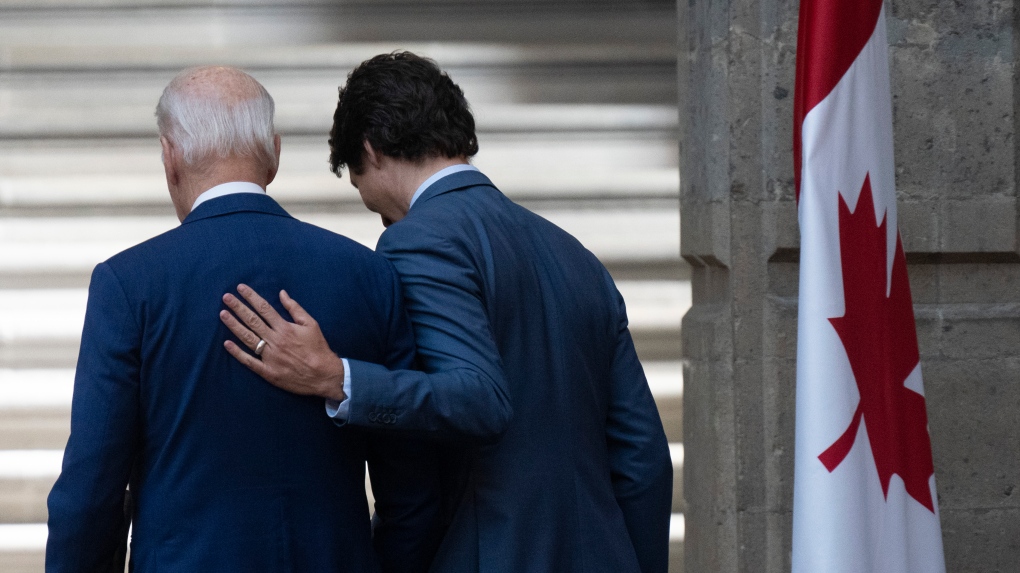
Last week, the bodies of eight migrants were recovered in the St. Lawrence River by Quebec near the New York state border. The migrants were members of two families, one of Romanian descent, and another of Indian citizens. Two young children, both with Canadian passports, were among those dead.
The news came just a week after Prime Minister Justin Trudeau and United States President Joe Biden agreed to expand the Safe Third Country Agreement, effectively tightening controls to discourage migrants from crossing illegally to make asylum claims.
Since Donald Trump’s presidency in 2017, which came with a string of anti-immigrant measures, the number of irregular migrants arriving in Canada has increased. Canada’s goal in updating the pact is to ease the influx of irregular border-crossing refugee claimants.
Here’s what you need to know about the policy and what it means for migrants.
What is the Safe Third Country Agreement and how has it changed?
Under the immigration policy, Canada and the U.S. recognize each other as safe countries to seek refuge, and dictate that migrants must make their refugee claims in the country where they first arrived.
As the Liberal government continued its “renegotiation” of the treaty with Washington, the Bloc Québécois and NDP had called for the border pact to be suspended, while the Conservatives wanted to close Roxham Road.
Meanwhile, a constitutional challenge of the agreement remains before the Supreme Court of Canada.
Why were changes made to the border rules?
The Canadian government has, for a few years, been pushing for the U.S. to move on the Safe Third Country Agreement.
For decades before the policy took effect in 2004, Canada also put pressure on the U.S. to sign the agreement because the flow of migrants at the border disproportionately came from the south to north.
In the year prior to the treaty taking effect, about 14,000 asylum seekers entered Canada through the U.S. but only about 200 went the other way, according to a U.S. House of Representatives hearing. Ultimately, the 2001 terrorist attacks prompted the U.S. to agree, with Canada offering more border security co-operation.
What is Roxham Road and why is it significant?
Nearly 40,000 people entered Canada at Roxham Road last year, a famous rural route in Quebec that serves as an unofficial border entry for asylum seekers to Canada. The figures account for 99 per cent of irregular entry into Canada.
Previously, migrants crossing at Roxham Road were not turned back under the Safe Third Country Agreement. But the expanded, current version of the agreement dictates that migrants crossing there cannot make a refugee claim upon entering Canada and must instead be turned back to the United States.
What criticism has the Safe Third Country Agreement received?
Many advocates see the drownings last week as having been predictable, reinforcing the predictions that a tightened border would only push migrants to take greater risks.
NDP immigration critic Jenny Kwan made the point at a news conference on Monday, criticizing Trudeau and Biden for “secretly” signing the modified agreement a year ago but only making it public the day before the new rule took effect, on March 25.
“People who are persecuted for trying to escape discrimination, for trying to escape violence, for trying to escape rejection for being who they are, for trying to get to safety would be pushed further underground,” Kwan said.
“Human trafficking will increase as a result of this rule,” she added.
A University of Winnipeg law professor, Shauna Labman, said Canada may see fewer migrants crossing irregularly, but reinforced that it doesn’t mean people will stop entering.
“More will die trying. Their crossings will be in more remote, more isolated and more dangerous places,” she said. “Women already fleeing gender-based violence will be at risk of further violence while reliant on smugglers and susceptible to human trafficking.”